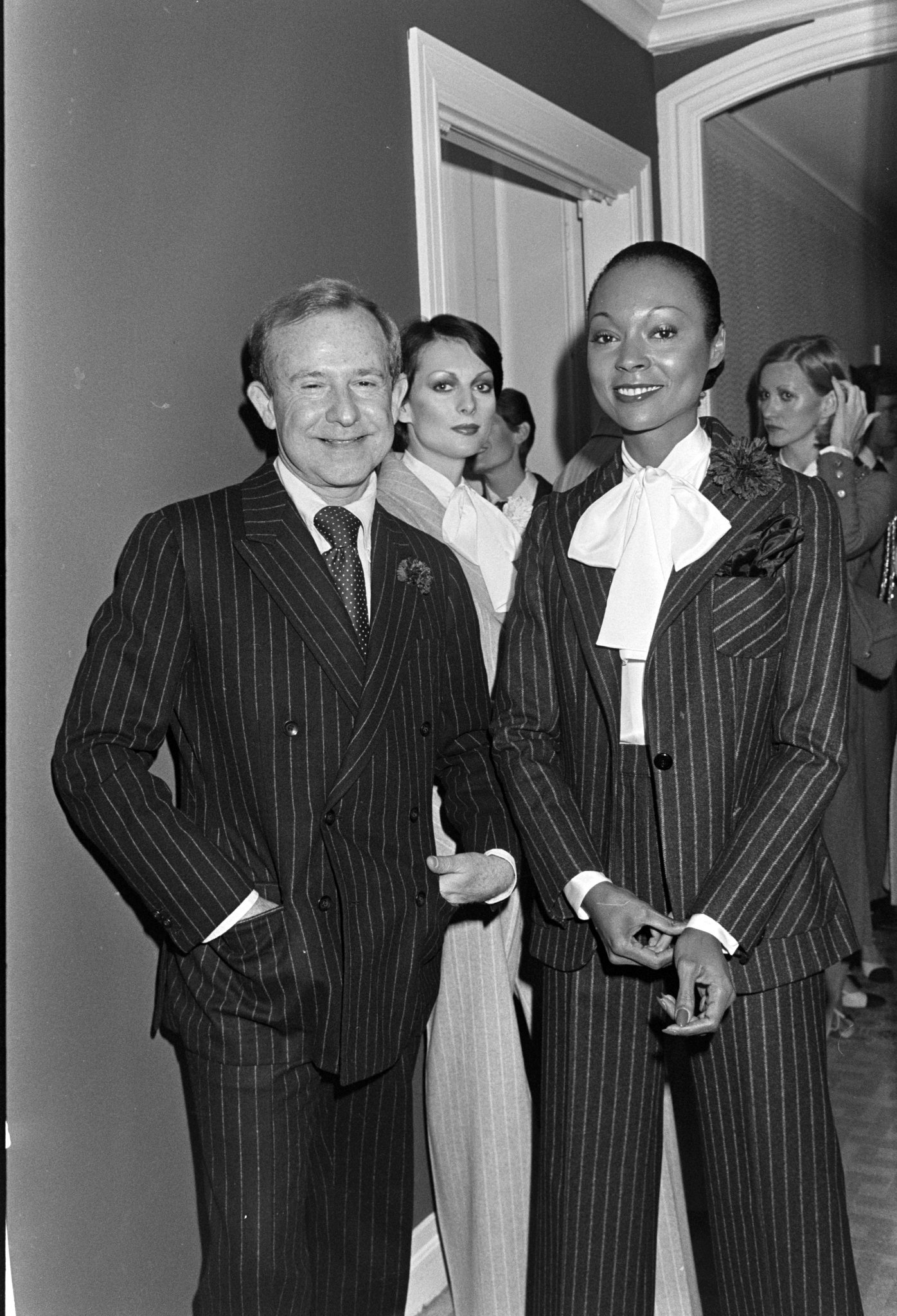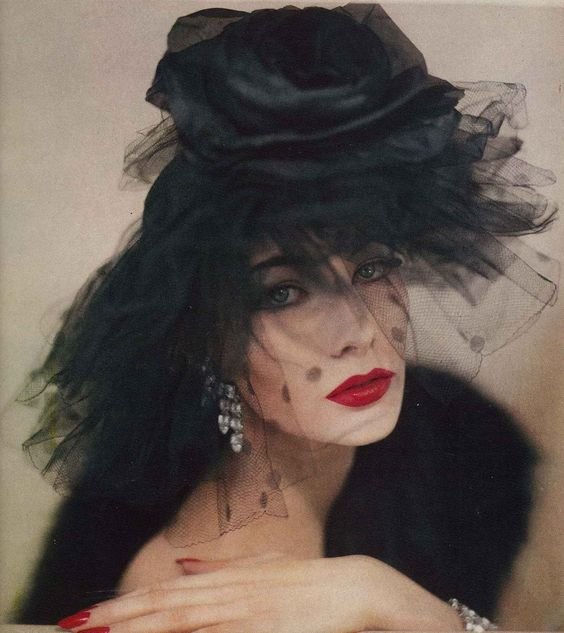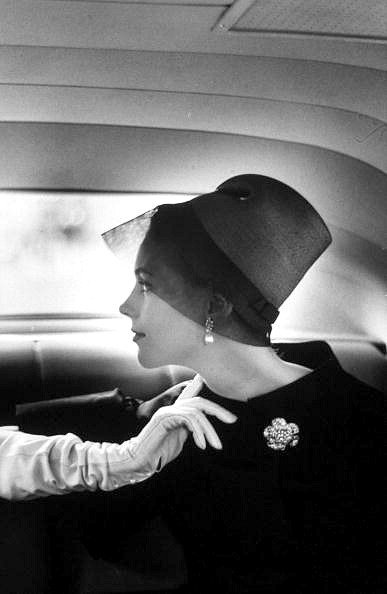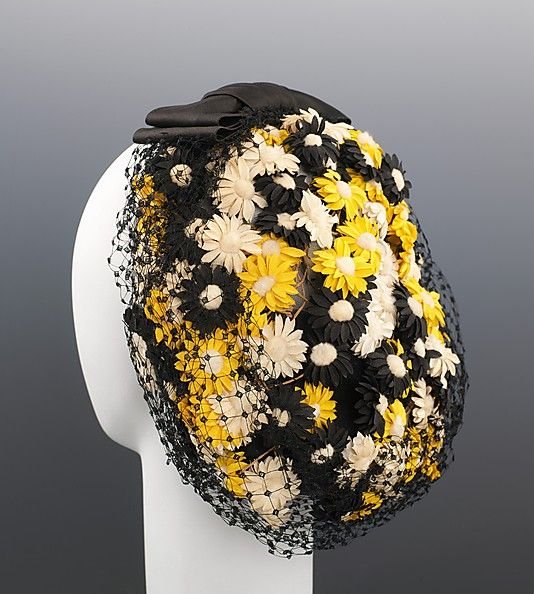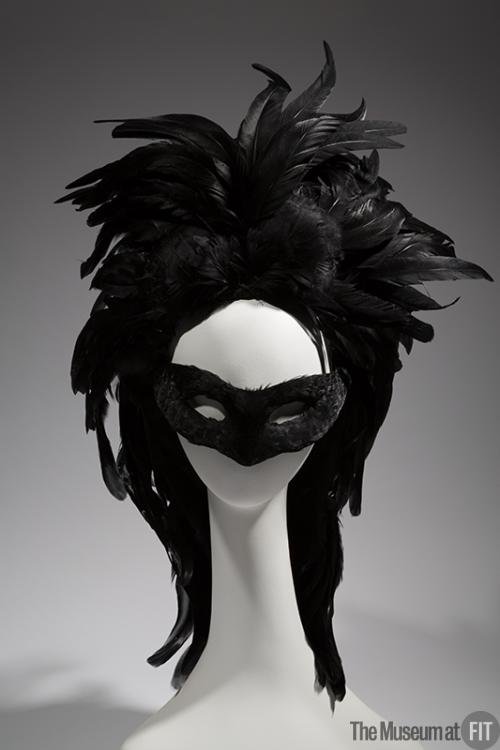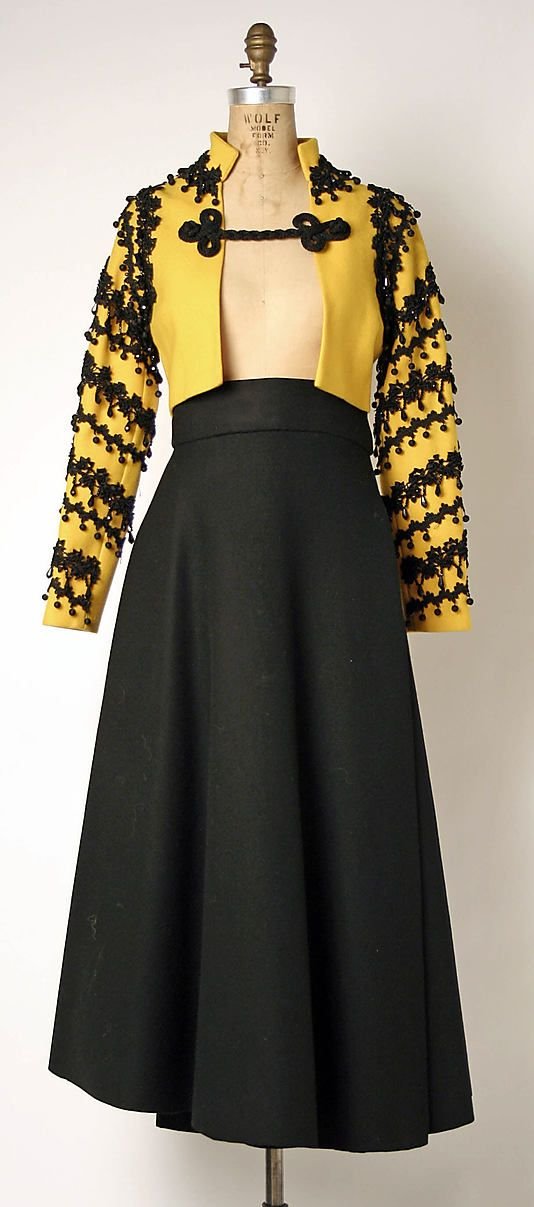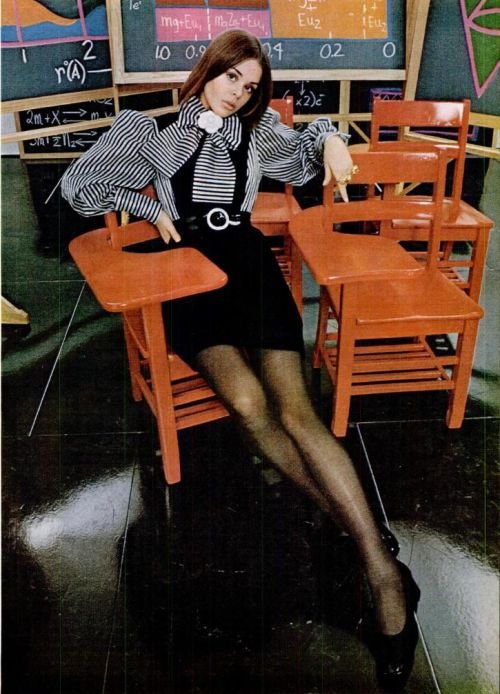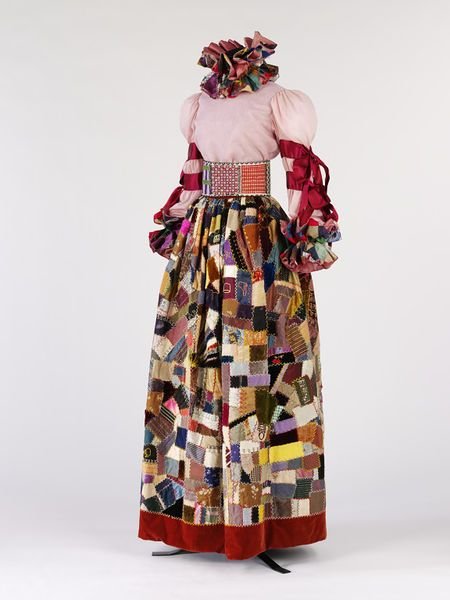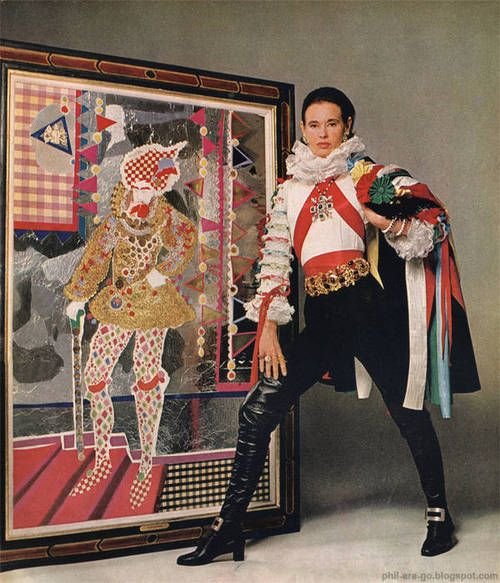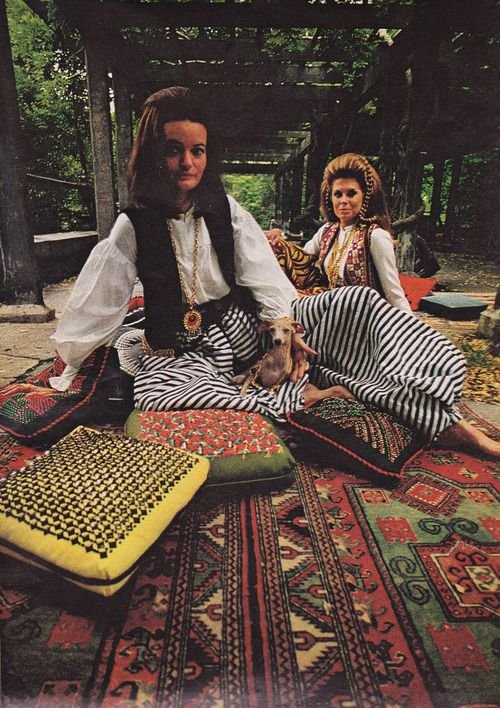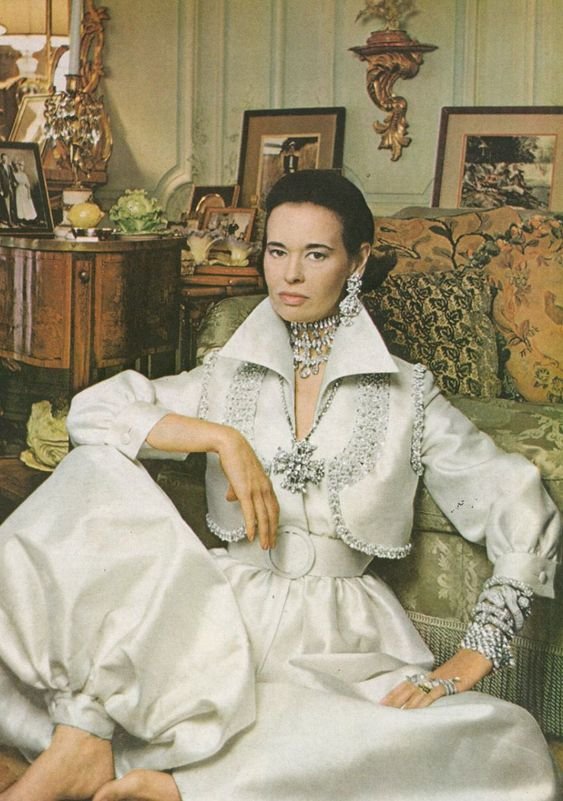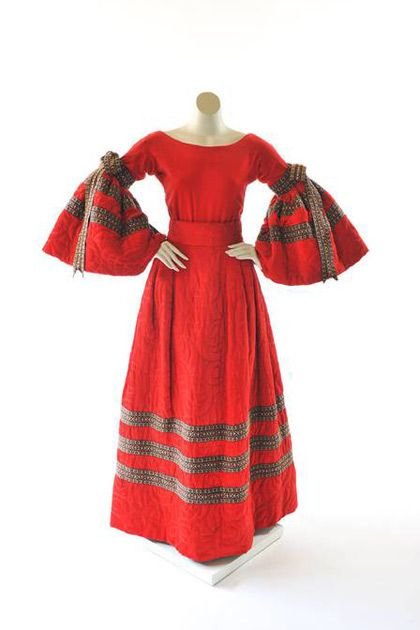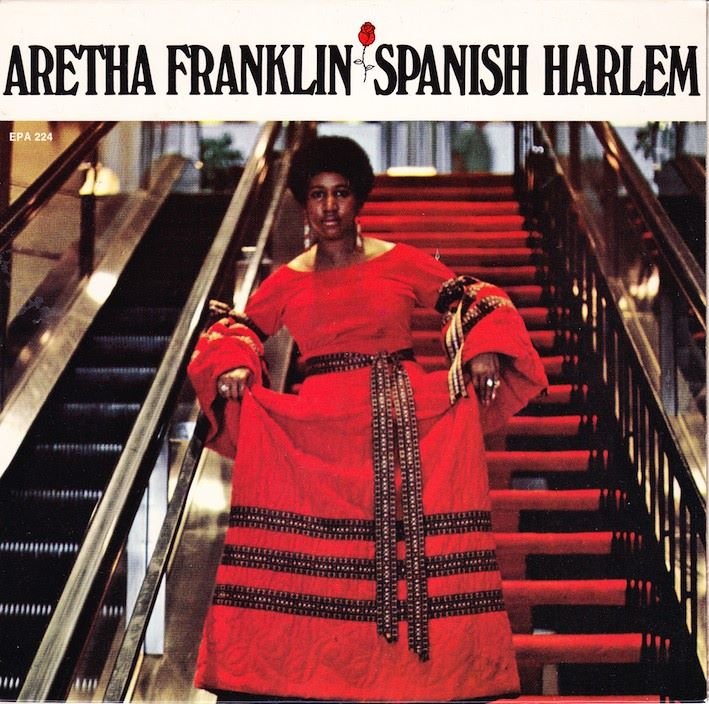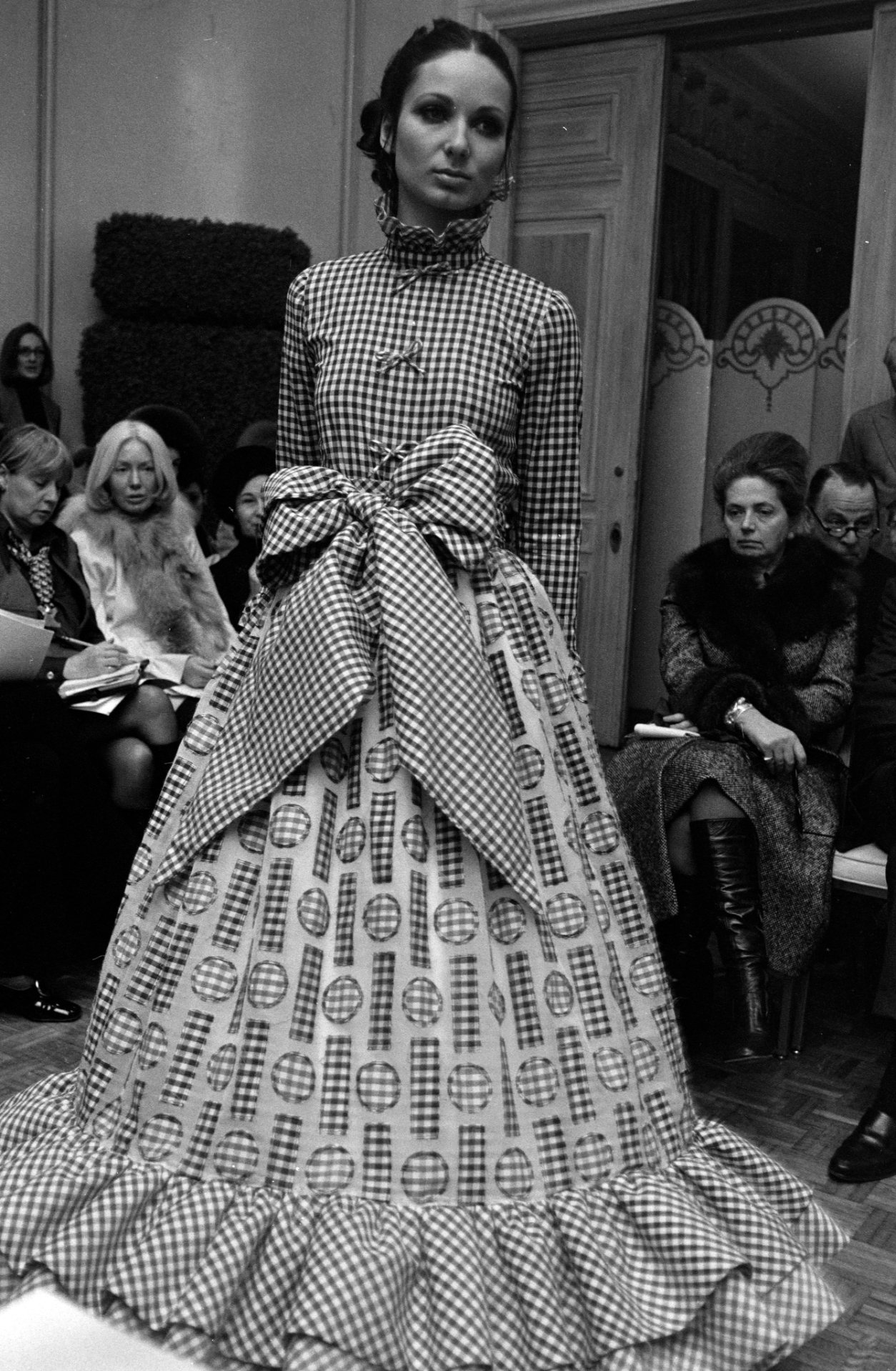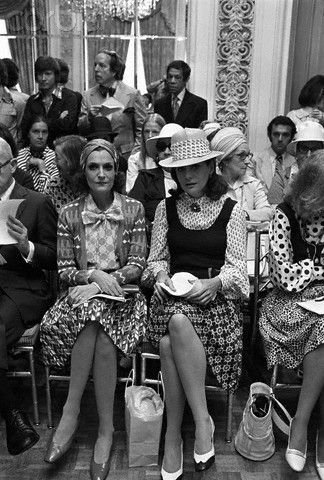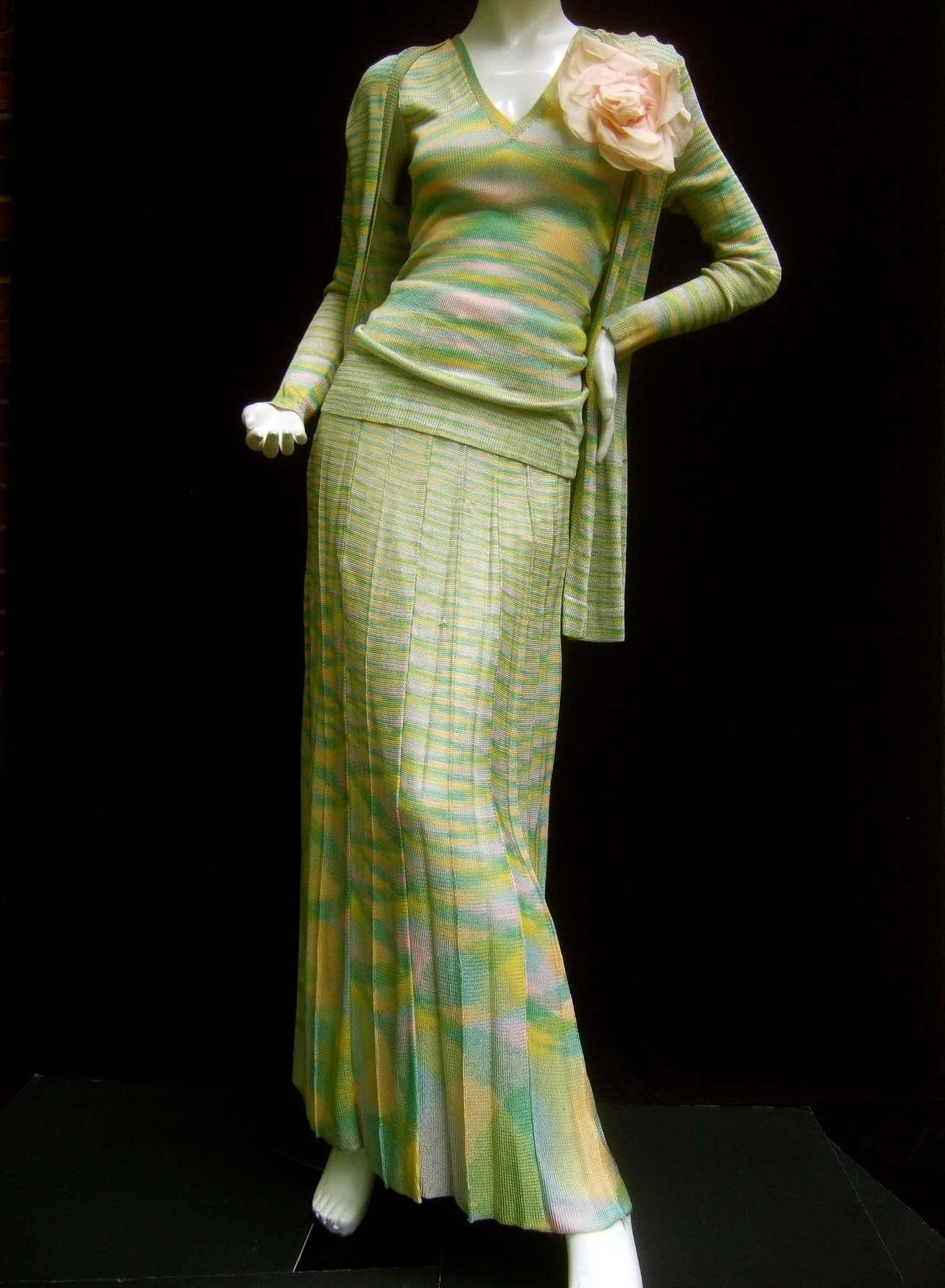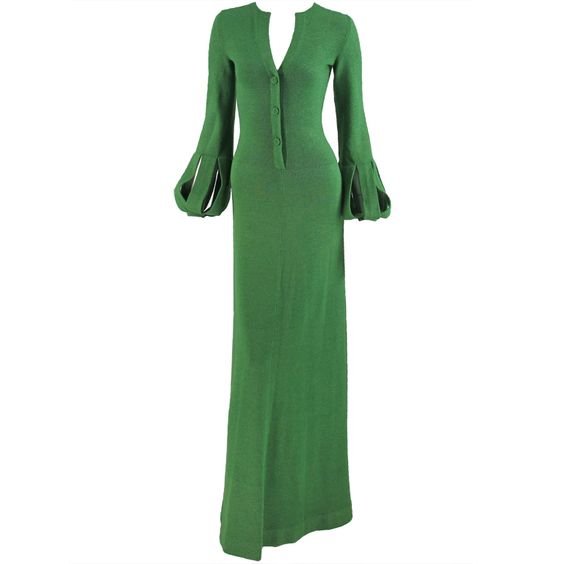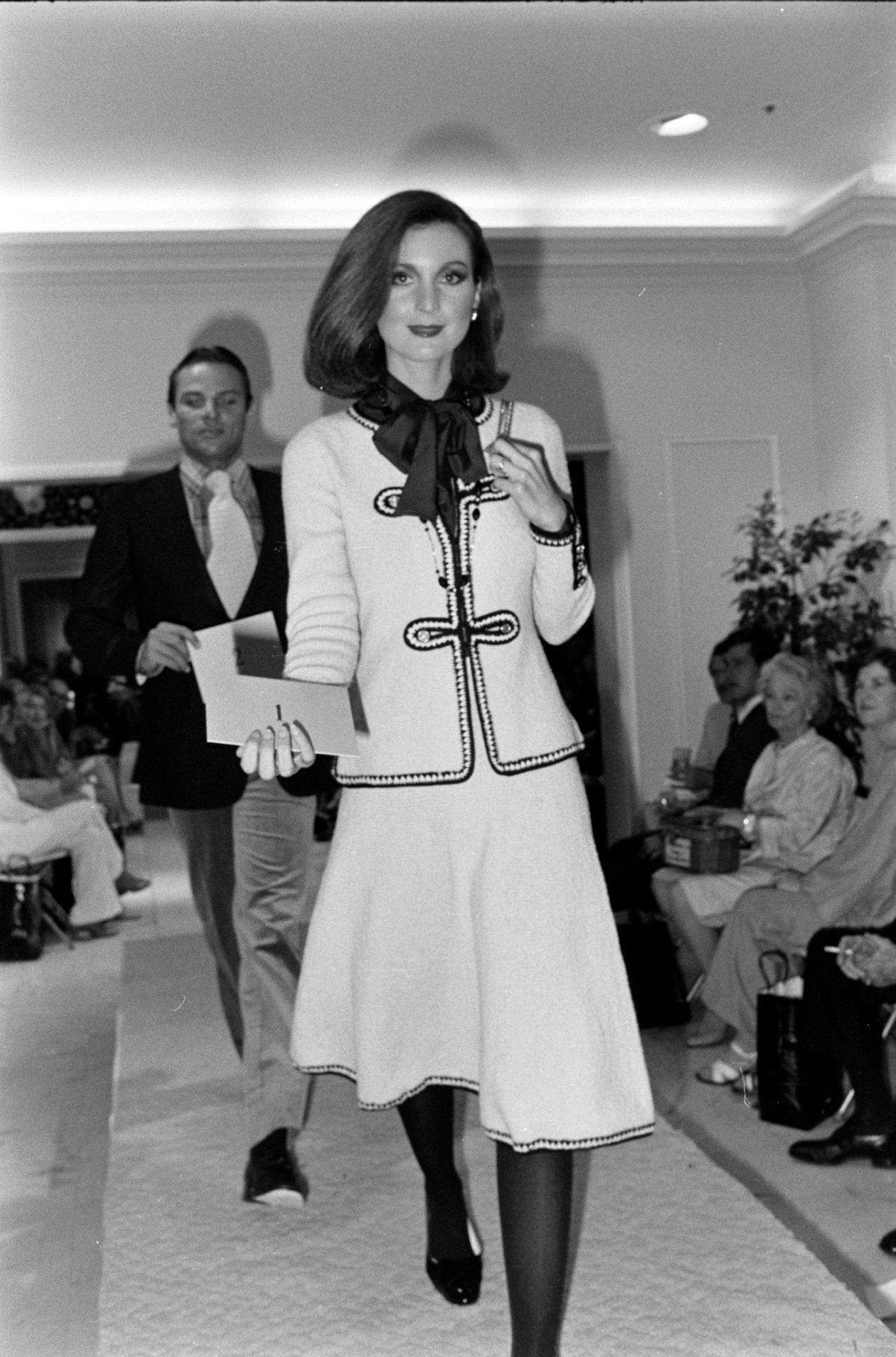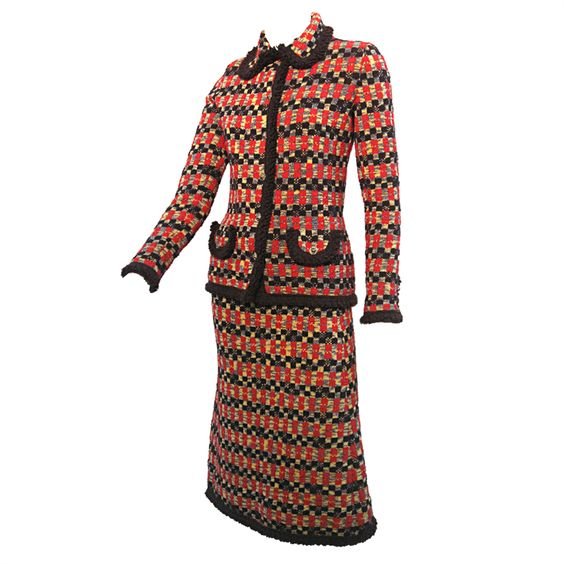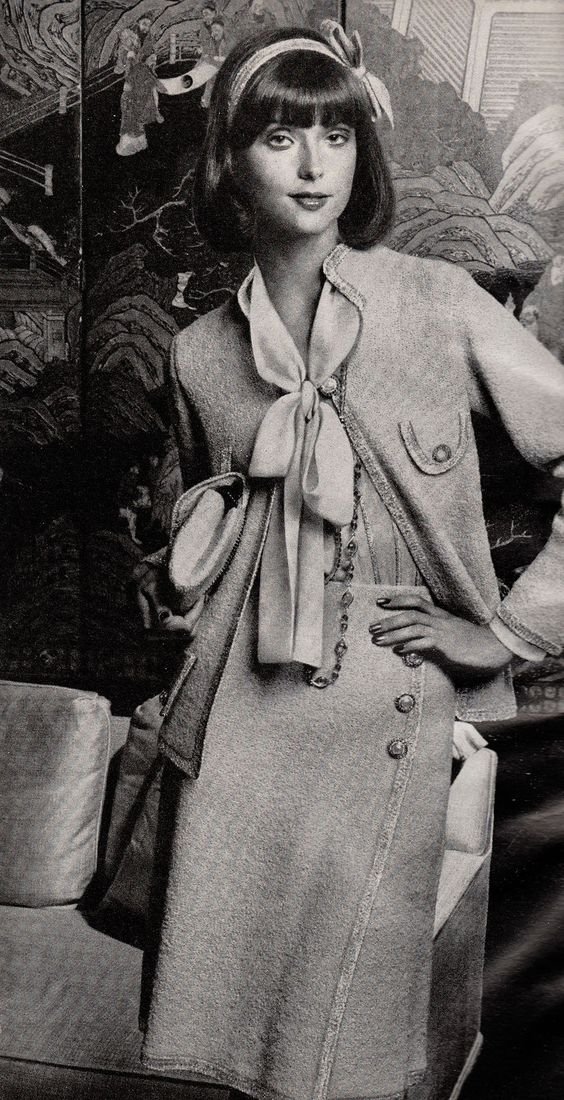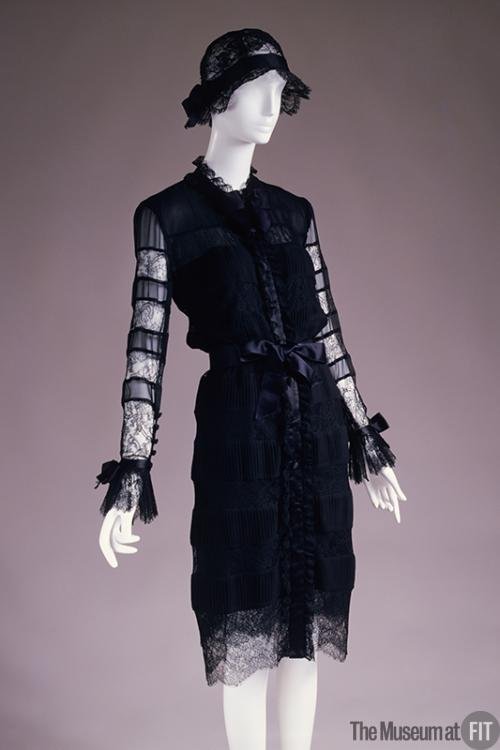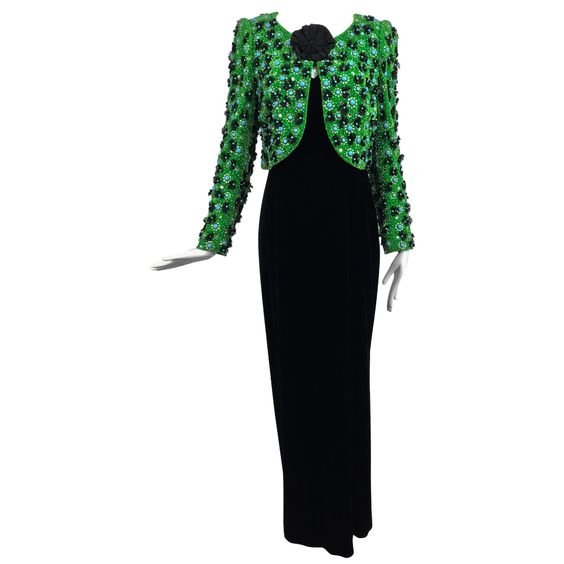Adolfo Sardiña, the fashion designer known by his first name, has died at the age of 98. In 1995, two years after Adolfo had retired, I wrote the entry on him for the Saint James Fashion Encyclopedia, which was edited by Richard Martin. Richard brought together a large team of writers to assemble the encyclopedia and we were given a very long list of designers to choose from. At that time Adolfo was widely known for his 1980s Chanel style suits, favorites of Nancy Reagan, but I was intrigued by his fanciful designs of the 1960s and interested in his stylistic evolution:
In April of 1993, Adolfo closed his salon on New York's East 57th Street, after more than 25 years producing his classically elegant knit suits, dresses, and eveningwear. The outcry from his clientéle was emotional and indicative of the devotion his clothes inspired in his "ladies," including C.Z. Guest ("It's just a tragedy for me. He has such great taste, style, and manners…I've been wearing his clothes for years; they suit my lifestyle. He designs for a certain way of life that all these new designers don't seem to comprehend."); Jean Tailer ("I'm devastated…. He's the sweetest, most talented man. With Adolfo, you always have the right thing to wear."), and scores of others, such as Nancy Reagan, the Duchess of Windsor, Noreen Drexel, and Pat Mosbacher.
These loyal clients were among the many who returned to Adolfo season after season for clothes they could wear year after year, clothes that looked stylish and felt comfortable, style and comfort being the essence of his customers' elegant and effortless lifestyle.
Adolfo began his career as a milliner in the early 1950s, a time when hat designers were accorded as much respect and attention as dress designers. By 1955 he had received the Coty Fashion award for his innovative, often dramatic hat designs for Emmé Millinery. In 1962 Adolfo opened his own salon and began to design clothes to show with his hat collection. During this period, as women gradually began to wear hats less often, Adolfo's hat designs became progressively bolder. His design point of view held that hats should be worn as an accessory rather than a necessity, and this attitude was carried over into his clothing designs as well.
Adolfo's clothes of the late 1960s had the idiosyncratic quality characteristic of the period and, more importantly, each piece stood out on its own as a special item. This concept of design was incongruous with the American sportswear idea of coordinated separates but was consistent with the sensibility of his wealthy customers who regarded clothes, like precious jewelry, as adornments and indicators of their social status. Among the garments that captured the attention of clients and press during this period were felt capes, red, yellow, or purple velvet bolero jackets embroidered with jet beads and black braid, studded lace-up peasant vests, low-cut floral overalls worn over organdy blouses, and extravagant patchwork evening looks.
Adolfo remarked, in 1968, "Today, one has to dress in bits and pieces—the more the merrier." By 1969 he described his clothes as being "for a woman's fun and fantasy moods—I don't think the classic is appealing to people any more." Just one year later, however, he changed his point of view and at the same time increased the focus on his knits, which had been introduced in 1969. In a review of Adolfo's fall 1970 collection, Eugenia Sheppard, writing in the New York Post, declared "he has completely abandoned the costume look of previous years." Adolfo was always responsive to his customers' needs and this sudden change of direction probably reflected their reaction to the social upheavals and excesses of the last years of the 1960s.
By the early 1970s the 1930s look, inspired by films such as Bonnie and Clyde and The Damned, swept over fashion, drowning out the kooky individualism of seasons past. His explorations of this look led Adolfo, in 1973, to hit on what would become his signature item. Taking his cue from Coco Chanel's cardigan style suits of the 1930s, Adolfo translated the textured tweed into a pebbly knit, added a matching silk blouse, and came up with a formula his clients returned to over and over again until his retirement. These revivals of a classic became classics in their own right and the look became associated in America with Adolfo as much as with Chanel.
Adolfo's collections were not limited to suits. When other American designers abandoned dresses for day in favor of sportswear separates, Adolfo continued to provide his customers with printed silk dresses appropriate for luncheons and other dressy daytime occasions. Adolfo's clients also relied on him for splendid eveningwear combining luxury with practicality. Typical evening looks included sweater knit tops with full satin or taffeta skirts, fur trimmed knit cardigans, silk pyjamas, and angora caftans.
The designer himself once remarked that "an Adolfo lady should look simple, classic, and comfortable." He brought modest and characteristically American design ideals to a higher level of luxury and charm, combining quality and style with comfort and ease.
I invite you to read the entire article on Adolfo here.
You can find the rest of my contributions to the Fashion Encyclopedia here.
